Design Workshop: Windows to the Sky
http://decor-ideas.org 06/05/2014 03:08 Decor Ideas
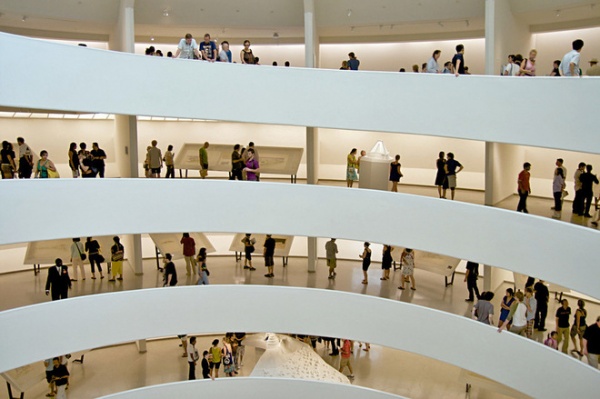
The central atrium of the Guggenheim museum in New York City, designed by Frank Lloyd Wright, is capped by one of modernism’s most iconic skylights. It washes the interior of the spiraling rotunda (shown here) in an ethereal, ever-changing light that draws visitors inward and upward upon entering.
This is also a skylight that’s been completely integrated into the design of the space and one of the defining features of the complex organic composition. The effects are due in large part to Wright’s sensitivity to the influence of natural light on both people and spaces. It’s something we all can learn from.
Indeed natural light is a powerful force in our lives: life giving, warming and mood altering. Harnessing that power and channeling it into our homes requires consideration of the skylight. Here are some pro tips for getting the most out of your skylights.
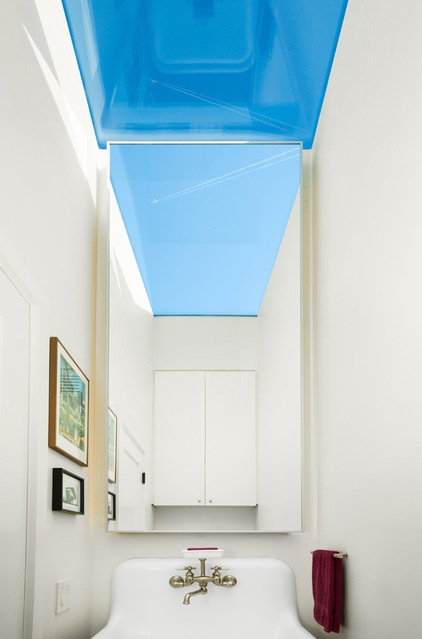
Hide the frame. Appearing as if it’s open directly to the sky above, this bathroom skylight infuses the small space with a sense of wonder. Because the skylight is oversize and the walls are continued up into the opening to conceal the frame, the entire ceiling appears to be glazed. This effect can be applied to even the most basic, inexpensive skylight.
The visual trickery involving the mirror is a playful extension of the size distortions taking place in a very small footprint.
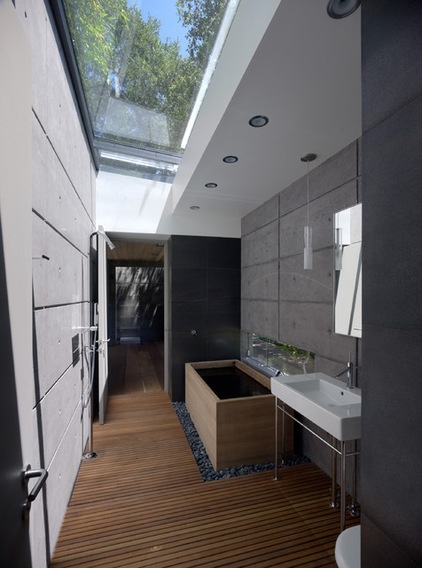
Think bigger. Oftentimes skylights are deployed as small interventions in large spaces. This bathroom illustrates the power of thinking bolder and bigger. The skylight runs the length of the bathing space and a full half of its width. Not only does this preclude the need for lighting during the day, but it reinforces special zones in the space. The bathtub and sink area have a lower ceiling and are by contrast darker.
Tip: Consider self-cleaning glass for your skylights; it has a special coating that breaks down surface dirt, leaving it free to be washed away by the rain. The upfront cost is higher, but the long-term advantage is, um, clear.
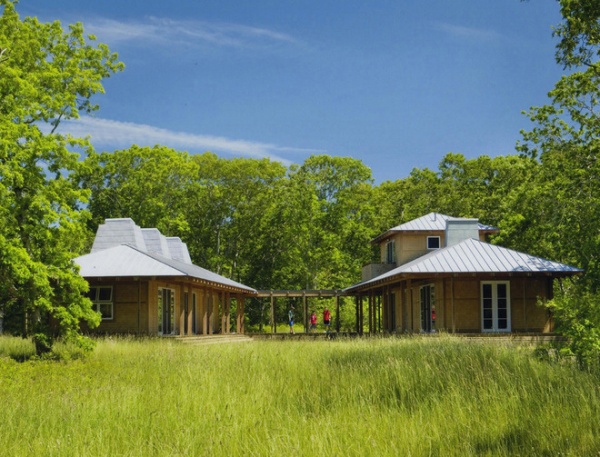
Use skylights as design elements. As an architect, I’m always seeking solutions that are married to the architecture in a meaningful way. This project takes a thoughtful approach toward admitting daylight to the interior by celebrating the skylight with a light monitor. Note the syncopated vertical roof shapes on the left of the building that hint at an interesting interior.
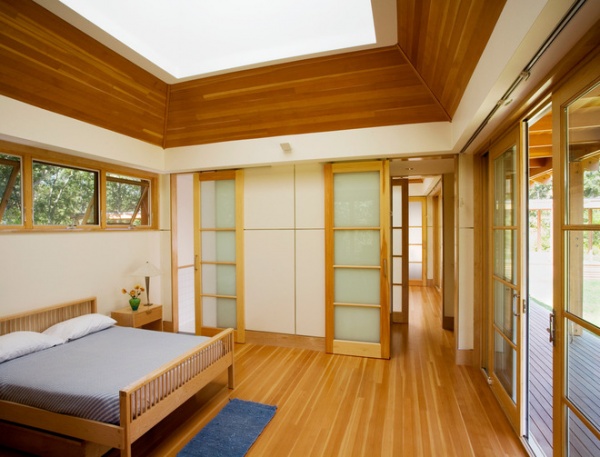
Moving into the bedroom space, we see the result of the light monitor capped with a large skylight. The interior is uniformly and brightly lit. We see the same exterior roof shape expressed in the tray ceiling, culminating in the skylight at the top of the monitor. The light makes the ceiling seem even taller and more dramatic. This is a great example of how seamlessly and expressively one can marry the light source with the architecture.
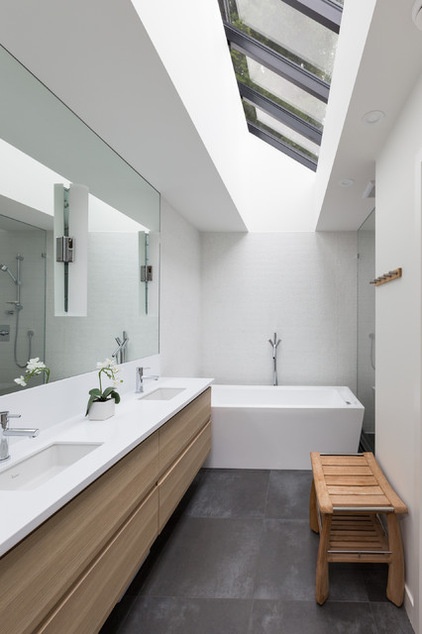
Consider orientation. Choosing the best place on your roof to locate a skylight is a critical exercise. Here are the basics:
North. Of the four orientations, this provides the coolest color temperature (bluer) and also the most even indirect light.East. Intense early morning light. For the remainder of the day, the light will be similar to that of a north-facing skylight: even and slightly cooler.South. Intense and bright, with a high potential for overheating spaces. Making the window operable will help curtail this. In northern climates a south-facing skylight can help to passively heat a home in the winter. In southern climates a south-facing skylight can introduce extreme cooling loads.West. Similar to the south-facing skylight in intensity and heat gain, but the timing shifts toward the late afternoon.Particularly hot and cold climates will require special consideration in terms of window orientation.
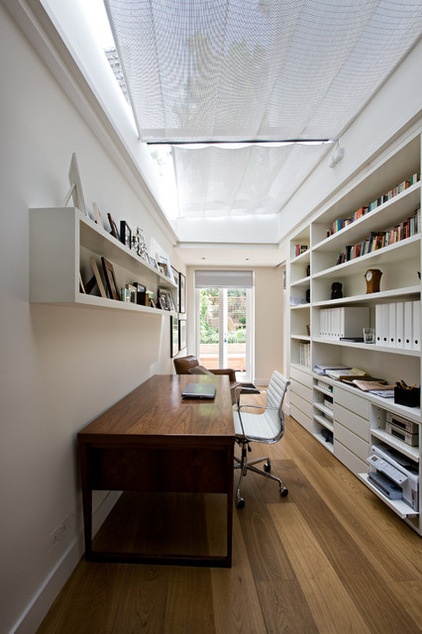
Shading devices. We don’t always have a choice regarding solar orientation. In renovation projects potential orientation problems can be mitigated with shading devices. Some skylights have the option of built-in remotely operated shades.
For larger skylights, such as this one, custom-fabricated scrims can be designed. Windows with all solar orientations can benefit from shading devices. They provide a finer level of control over both the amount of light entering a space and heat gain or loss.
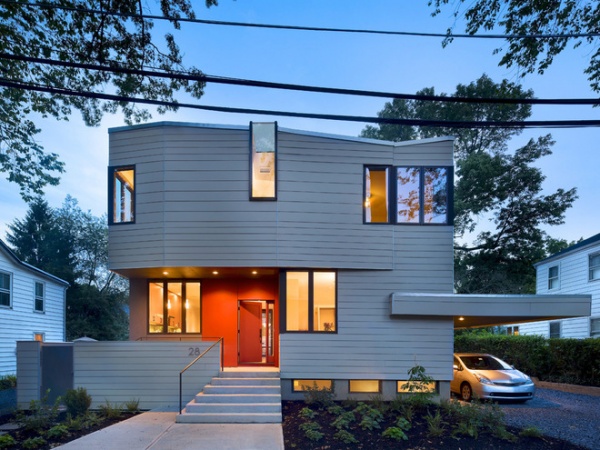
Integration. Consider carefully how a skylight will be integrated into the overall design of the home. This project is an experiment in the use of affordable, modular construction and explores the boundaries of what’s possible using a standard kit of parts. The resulting building bears little resemblance to the typical rectilinear forms of modular construction. Clearly the experimentation has extended to the treatment of windows.
The pattern of openings in this example is distinct. Windows wrap around corners. The architect has carried this language of openings consistently throughout the design, as we can see above the front door where the window becomes a skylight, moving from wall to roof.
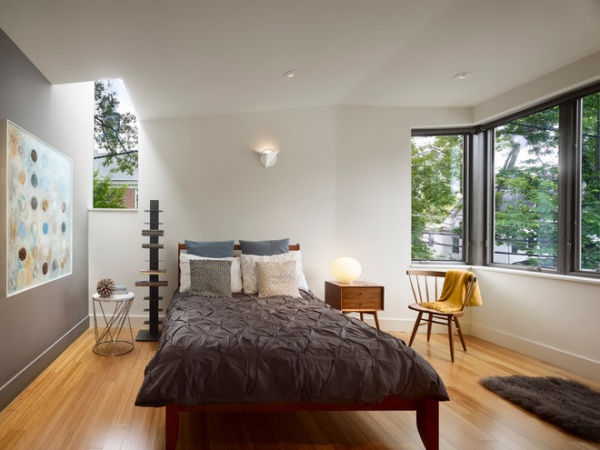
This isn’t your traditional skylight, but it’s an example of thinking outside of the box when it comes to utilizing roof windows. Here one can appreciate the effects of the wall window’s becoming a roof window. It’s very similar to the corner window treatment. The skylight offers views to the night sky and a wash of ample, even natural light during the day.
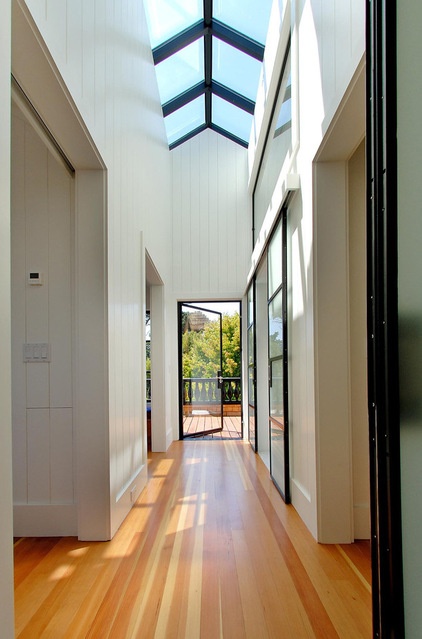
Etched glass. Another means of tempering the amount of light and heat that enter a space is etched or sandblasted glass. The etching process allows the light striking the surface of the glass to be bent and scattered, which results in a more diffuse and even light.
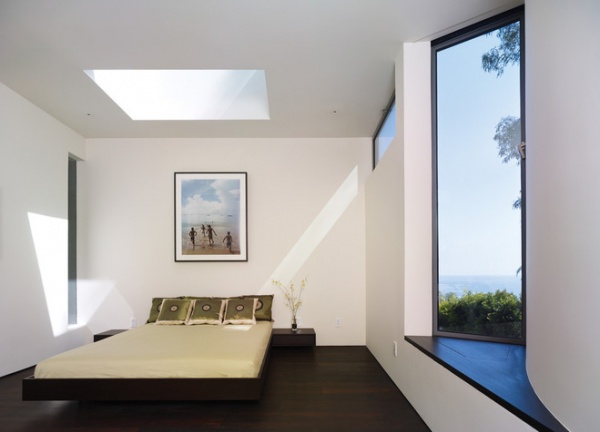
Nighttime considerations. Consider too the impact of a skylight at night. With the lights off, stargazing from your bed can be a really wonderful experience.
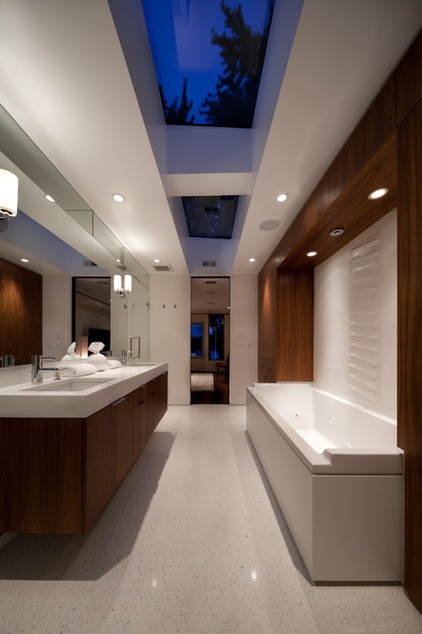
In a well-lit room at night, a skylight will appear black, just like other windows. Shades and screening devices can minimize the black hole effect; so can uplighting. If your skylight is etched, as discussed previously, casting some light on it will scatter and diffuse light around the entire space and illuminate the skylight.
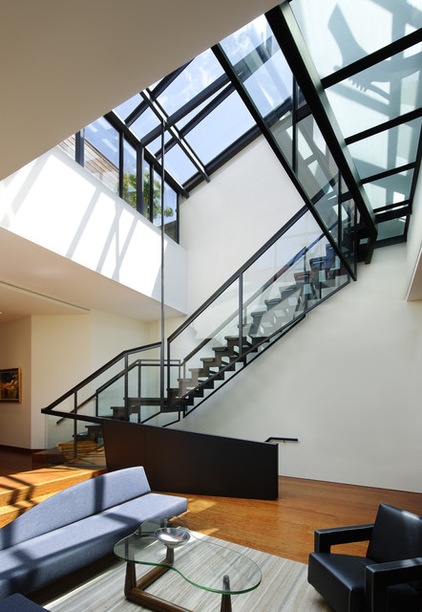
Passive cooling. Operable skylights are extremely efficient passive cooling devices. Placing a skylight at the top of a stairwell can enhance the stack effect, the natural tendency of warm air to rise. Opening the skylight at the top of the stack works much like opening a damper on a chimney, exhausting the warm, stale interior air and replacing it with cool, fresh air from below.
Most ventilating skylights have manual or motorized options. While they’re more expensive, I always recommend motorized units, because they’re more likely to be used. Simply pushing a button requires far less effort than finding and wrestling with an extension pole to open the skylights.
Tip: Self-contained, solar-powered skylights eliminate the need for dedicated wiring, and they qualify for a tax rebate.
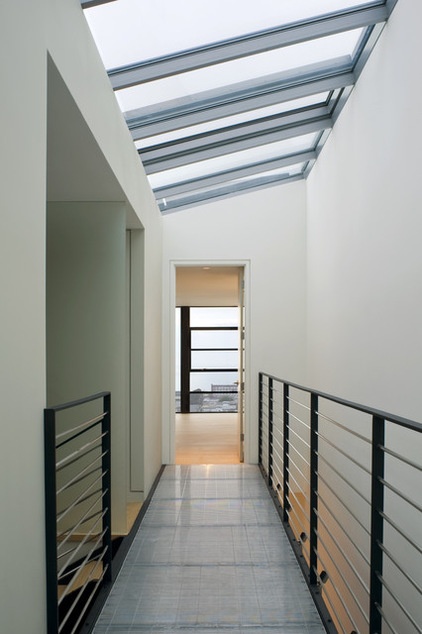
Use to suggest movement. We’re naturally programmed to be drawn toward sources of light. This makes the skylight an effective tool for inciting movement between spaces horizontally and vertically. This skylight illuminates a stair hall and is paired with a glass floor to allow even more light to pass through to the spaces below.
This works for single skylights as well, where pools of light can be used to mark circulation zones.
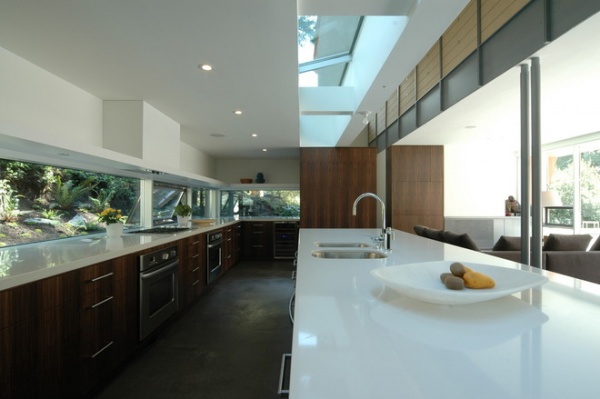
Control contrast. This is another accomplished example of integrating a monumental skylight into the architecture of a space. The skylight matches the proportions of the work surface below to provide even illumination and emphasize the linear gestures.
Equally, the light from above balances the daylight coming in from the side walls. Daylight emanating from a single direction in a space can produce uncomfortable contrasts, causing eyestrain. And it can render a functional space such as a kitchen very hard to use. Providing light from a minimum of two directions reduces contrast and improves livability.
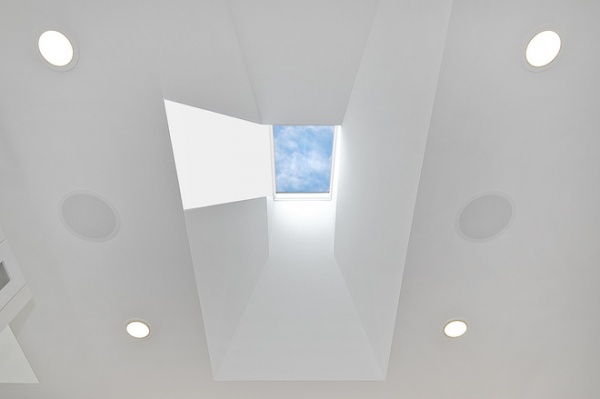
Shape the sides. Skylights don’t always have to have vertical walls. Altering the shape of the bounding edges can turn even a small skylight into a meaningful and powerful statement, as seen here. A broader splay to the sides allows more light into the spaces below, especially when complemented with a light color on the tunnel walls.
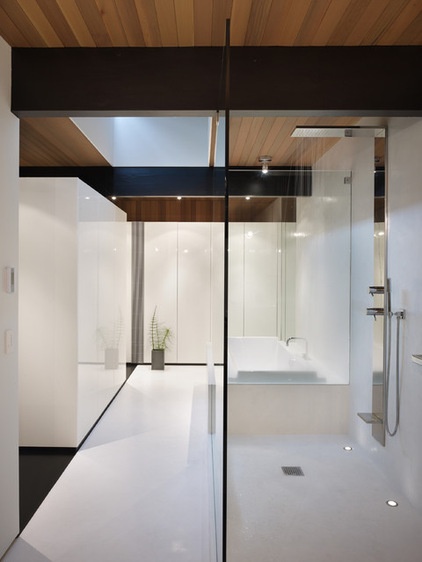
Daylighting private spaces. In my opinion admitting daylight into very private spaces is one of the most appropriate uses of skylights in architecture. As seen in this space, this light can be ethereal and calming, a perfect match for a bathing space. It can also be bright and intense, waking and warming, depending on exposure and size. Unseen light sources also introduce mystery and a sense that even small spaces are much larger than they really are.
This type of daylighting can also be achieved through the use of sun tunnels and other indirect sources that gather light from above and transport it to spaces that wouldn’t otherwise have an opportunity for daylight.
More: How to Add a Skylight or Light Tube
Related Articles Recommended












